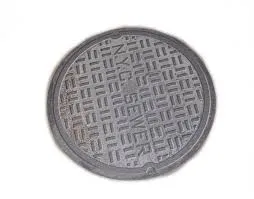tree grates
Understanding Tree Grates Enhancing Urban Environments
Tree grates are essential components of urban landscaping, serving multiple purposes that benefit both trees and city dwellers. These metal or concrete structures, placed around the base of trees in sidewalks and plazas, play a crucial role in promoting healthy tree growth while also maintaining the aesthetic appeal of urban environments.
One of the primary functions of tree grates is to protect the roots of trees while allowing essential elements like water, air, and nutrients to reach them. The urban environment can be harsh for trees; compacted soil, pavement, and pollutants can significantly hinder tree growth. Well-designed tree grates help alleviate these issues by providing an opening in the hardscape that enables the roots to breathe and absorb moisture. Moreover, many modern tree grates are designed with perforations or gaps that allow rainfall to seep through while preventing soil erosion and keeping surrounding areas tidy.
In addition to supporting tree health, tree grates contribute to pedestrian safety and comfort. Sidewalks can become hazardous when tree roots push up the pavement, creating tripping hazards. By providing a protective barrier, tree grates help keep the surrounding pavement level and safe for pedestrians. Furthermore, they can enhance the overall appearance of a street or plaza, creating a more inviting environment. Tree grates often come in various designs, materials, and finishes, allowing city planners and designers to select options that complement the surrounding architecture and landscape.
tree grates

Another important aspect of tree grates is their ability to reduce urban heat islands
. Cities tend to be significantly warmer than their rural counterparts due to the abundance of concrete and limited vegetation. Trees help mitigate this effect by providing shade, and when properly integrated with grates, they can maximize the cooling benefits. By encouraging more tree planting and proper installations of grates, urban planners can make strides toward creating cooler, more sustainable cities.Moreover, tree grates promote biodiversity in urban areas. As cities expand and natural habitats are reduced, urban trees become vital sanctuaries for local wildlife. Trees provide food and shelter for various species of birds, insects, and small mammals. By ensuring that trees thrive through the use of tree grates, cities can foster a richer biodiversity, ultimately leading to healthier ecosystems.
However, it is essential to recognize that tree grates require careful planning and maintenance. Urban managers must monitor the health of trees and ensure that grates do not hinder their growth. Sometimes, grates can restrict root expansion if not appropriately designed, potentially leading to tree health problems in the long run. Regular maintenance, including cleaning debris that can accumulate on grates, is necessary to ensure their effectiveness.
In conclusion, tree grates are more than just aesthetic features; they are vital elements in promoting healthy urban trees, enhancing pedestrian safety, reducing environmental heat, and encouraging biodiversity. As cities continue to grow, the thoughtful integration of tree grates in urban planning will be crucial for creating vibrant, healthy, and sustainable environments. By understanding and implementing the best practices for tree grates, we can contribute to the improvement of our urban landscapes, making them more livable for both people and nature.
-
The Smarter Choice for Pedestrian AreasNewsJun.30,2025
-
The Gold Standard in Round Drain CoversNewsJun.30,2025
-
The Gold Standard in Manhole Cover SystemsNewsJun.30,2025
-
Superior Drainage Solutions with Premium Gully GratesNewsJun.30,2025
-
Superior Drainage Solutions for Global InfrastructureNewsJun.30,2025
-
Square Manhole Solutions for Modern InfrastructureNewsJun.30,2025
-
Premium Manhole Covers for Modern InfrastructureNewsJun.30,2025
